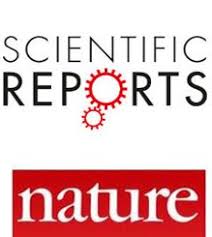Ver ítem
- xmlui.general.dspace_homeCentros e Institutos de InvestigaciónCIA. Centro de Investigaciones de AgroindustriaInstituto de Ingenieria RuralArtículos Científicosxmlui.ArtifactBrowser.ItemViewer.trail
- Inicio
- Centros e Institutos de Investigación
- CIA. Centro de Investigaciones de Agroindustria
- Instituto de Ingenieria Rural
- Artículos Científicos
- Ver ítem
Managed honeybees and South American bumblebees exhibit complementary foraging patterns in highbush blueberry
Resumen
Despite Apis mellifera being the most widely managed pollinator to enhance crop production, they are not the most suitable species for highbush blueberries, which possess restrictive floral morphology and require buzz-pollination. Thus, the South American bumblebee Bombus pauloensis is increasingly managed as an alternative species in this crop alongside honeybees. Herein, we evaluated the foraging patterns of the two species, concerning the potential
[ver mas...]
Despite Apis mellifera being the most widely managed pollinator to enhance crop production, they are not the most suitable species for highbush blueberries, which possess restrictive floral morphology and require buzz-pollination. Thus, the South American bumblebee Bombus pauloensis is increasingly managed as an alternative species in this crop alongside honeybees. Herein, we evaluated the foraging patterns of the two species, concerning the potential pollen transfer between two blueberry co-blooming cultivars grown under open high tunnels during two seasons considering different colony densities. Both managed pollinators showed different foraging patterns, influenced by the cultivar identity which varied in their floral morphology and nectar production. Our results demonstrate that both species are efficient foragers on highbush blueberry and further suggest that they contribute
positively to its pollination in complementary ways: while bumblebees were more effective at the individual level (visited more flowers and carried more pollen), the greater densities of honeybee foragers overcame the difficulties imposed by the flower morphology, irrespective of the stocking rate. This study supports the addition of managed native bumblebees alongside honeybees to enhance
pollination services and emphasizes the importance of examining behavioural aspects to optimize management practices in pollinator-dependent crops.
[Cerrar]

Autor
Estravis‑Barcala, María Cecilia;
Palottini, Florencia;
Macri, Ivana Noelia;
Nery, Denise;
Farina, Walter Marcelo;
Fuente
Scientific Reports 11 : art. no. 8187. (2021)
Fecha
2021-04
Editorial
Nature Publishing Group
ISSN
2045-2322
Formato
pdf
Tipo de documento
artículo
Palabras Claves
Derechos de acceso
Abierto
 Excepto donde se diga explicitamente, este item se publica bajo la siguiente descripción: Creative Commons Attribution-NonCommercial-ShareAlike 2.5 Unported (CC BY-NC-SA 2.5)
Excepto donde se diga explicitamente, este item se publica bajo la siguiente descripción: Creative Commons Attribution-NonCommercial-ShareAlike 2.5 Unported (CC BY-NC-SA 2.5)


